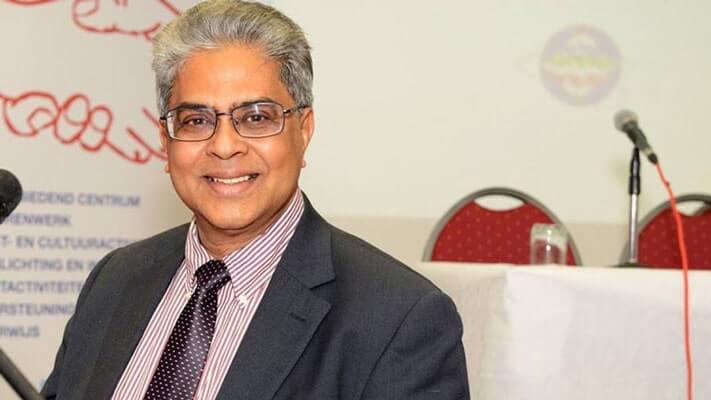Border issues in Suriname
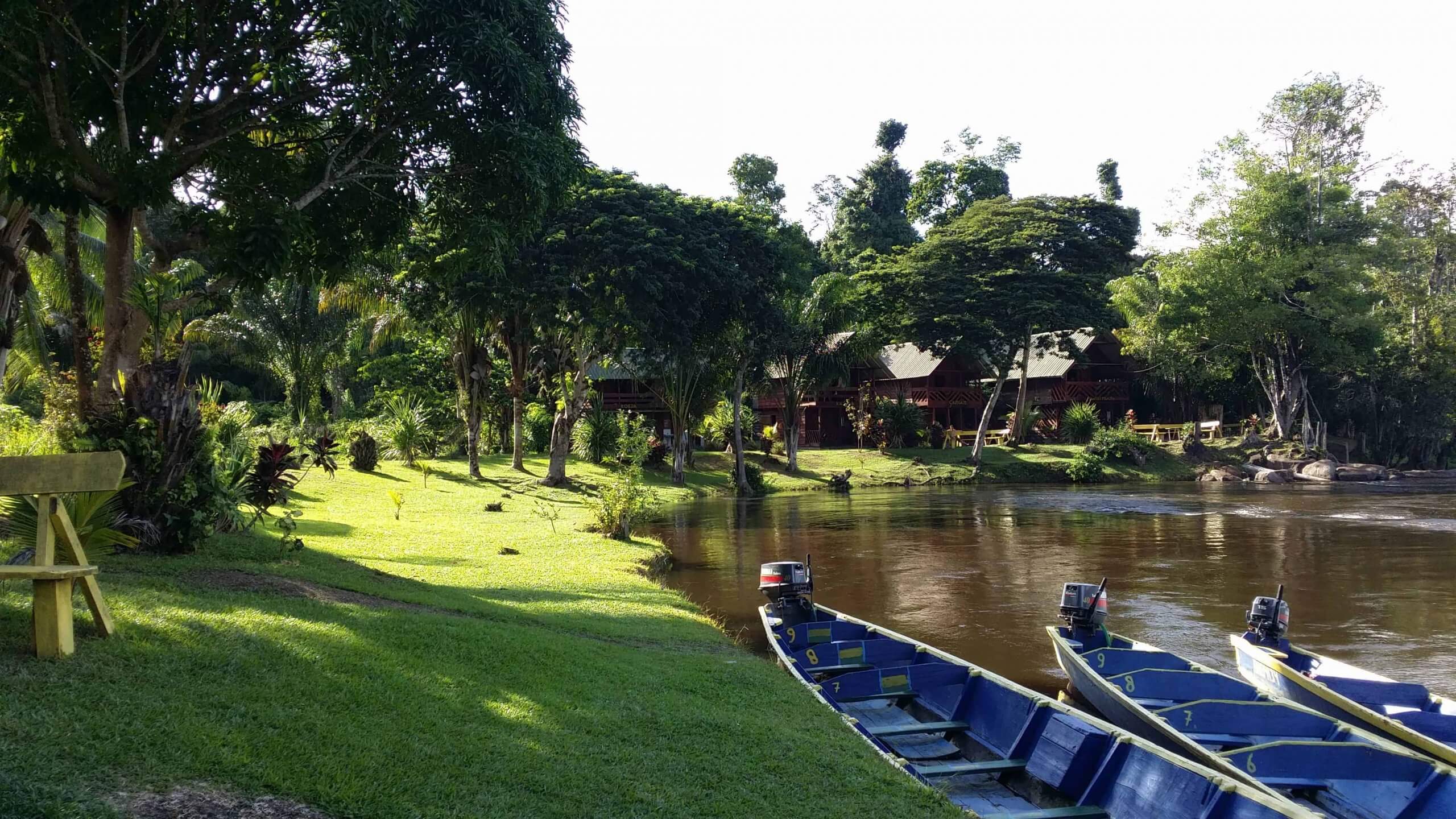
Countries come and go
eyesonsuriname/ roykhemradj

Amsterdam, 7 January 2022– The issue in the border issue was that Suriname demanded that the Netherlands make a public statement regarding the territory to be transferred to the new Republic of Suriname in 1975.
In the end, this was laid down by the Netherlands in an internal, i.e. non-public statement, which raises the question of its relevance under international law”.
Borders
Or How Countries Disappear
On November 25, 2022, Suriname’s Independence Day, the book: The border dispute between Suriname and Guyana-Contemplations about a controversial territorial triangle, written by former ambassador

Evert Gonesh was published.
On a Wednesday afternoon early december 2022, he handed over the very first copy to ambassador Rajendre Khargi at the Surinamese embassy in The Hague. On the eve of the launch of this book, Roy Khemradj interviewed Mr. and writer Evert Gonesh (84), who previously penned on this subject.

As a lecturer at the Anton de Kom University, he published as early as 1974 on the Surinamese-Guyanese border issue. In line with this, in 1977 he presented a paper at a conference in Trinidad on contemporary trends and issues in Caribbean international affairs.
Ambassador, is there a reason why this book appears on the eve of Srefidensi?
“Although coincidental, it is convenient that the book appears around the commemoration of the independence of our country. It is intended as a wake-up call to Suriname. In February 1968, the government of Guyana published a white paper on the border dispute.
Several authors have used the Guyanese white paper as the primary source of information when analyzing this topic. This has led to a skewed growth in opinion formation.
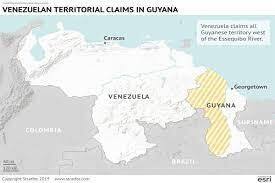
So much so that Guyana believes in its own right and successive governments in Suriname have opted to postpone the matter.
Apparently every government in Paramaribo thought it was too great a risk to be held responsible for a possible loss of the area that was always being claimed”.
Quite a bit has already been written and published about the Surinamese-Guyanese border dispute. I am thinking, for example, of Lachman Soedamah’s dissertation, even though it has been eight years already. What is the special thing about your book?
“Very little has been written from the Surinamese side about the Surinamese-Guyanese border dispute specifically.
The dissertation ”Suriname Complete?” van Lachman Soedamah, deals with the border disputes in ten Latin American countries, from which arise mechanisms of dispute settlement, which may be applicable to the Surinamese border disputes.

In September 1982, at the request of former minister Harvey Naarendorp (BuZa), I had drawn up a first draft of a Surinamese white paper. Nothing came of this as a result of the crisis into which the country subsequently found itself.
The special thing about my book is that, using archive material from the British Museum and the then Public Record Office in London and the National Archives in The Hague, it zooms in on the problems with the western border of Suriname. Attention is also paid to the international law aspects of this issue in order to strengthen or restore Suriname’s legal position”.
After the independence of British Guiana in 1966, Prime Minister Burnham occupied Tigri with Robert Schomburgk’s determination that the Coeroeni was the source river.
This while Barrington Brown established years later after Schomburgk that the upper course of the Corantijn is the main river.
What did the Netherlands do when Guyana occupied Surinamese territory?
“In almost the entire history of this issue, the Netherlands has used its own Dutch interest not to come into conflict with England as a guideline.
Even after England transferred sovereignty to Guyana in May 1966, there was insufficient support from the Netherlands, even though we had been part of the Kingdom of the Netherlands since 1954.
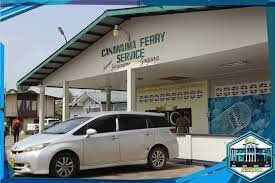
The Netherlands refused to send the TRIS – Troops in Suriname – stationed in Suriname to the ‘Tigri Triangle’.
That is why the then Prime Minister Pengel decided to set up the DefPol – Defense Police – in 1968. But in March 1969 the Pengel government fell. A transitional government that had to prepare new elections for October 1969 paid no attention to the border issue and Tigri was overrun by the Guyanese army on August 19, 1969. Since then, the dispute has been simmering for more than half a century.”
“At independence, the issue about the border issue was that Suriname demanded that the Netherlands make a public statement regarding the territory to be transferred to the new Republic. In the end, this was laid down by the Netherlands in an internal, i.e. non-public statement, which raises the question of its relevance under international law”.
Suriname and Guyana signed the Chaguaramas protocol after 1975.
What was the essence of this and did the parties adhere to it?
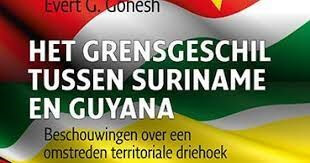
“Prime Minister Manley of Jamaica offered his good offices to mediate in the problems that arose after the occupation of the disputed territory by Guyana. In the Protocol of Chaguaramas, the Prime Ministers of Guyana and Suriname agreed to ensure the demilitarization of the ‘border area of Guyana and Suriname in the region of the Upper Corantine’, roughly translated: to return military personnel stationed in the disputed area. Pull.
Guyana has not complied with this to date.
” What did Suriname do afterwards, because the treaty provides for a joint Surinamese-Guyanese border commission. Has this yielded anything?
“Suriname has not taken any action after that and it has often sufficed to declare that Suriname has no disputed territory, because ‘Tigri is ours’ … and with that this national matter has reached an impasse. Although talks between the National Boundary Commissions of the two countries have been taking place at long intervals since 1966, the impression is that due to the rigid positions of the two governments, these commissions have little room for maneuver to head towards a solution completely independently.
President Santokhi, the border issue is topical again (fishing permits, bridge over the Corantijn). Has the president not reached out to his Guyanese colleague too quickly?
“President Santokhi said to the media after his visit to Guyana in 2021: “We are not hiding the border issue (…) We must discuss this and solve it sustainably. We must show leadership and not push the problem off and push it forward in order to burden the next generation.
” Well, with this publication I aim on the one hand to not only provide Suriname with a strategic and legal handle, but on the other hand also to document as much as possible the arguments used by Guyana for their claim to the ‘Tigri Triangle’ for mutual respect of sovereignty and at the same time good neighbourliness?
“The announced construction of a bridge over the Corantijn River can be a welcome occasion for discussion of the border dispute at the highest level.
The bridge will certainly be able to generate enormous development in both countries in the long term and will also bring the two peoples closer together in many respects.
If we opt for a legal solution, it could take years with the risk of a winner and a loser.
It is therefore recommended that a diplomatic give-and-take package be worked towards a solution to the dispute.
The elements for this seem to be present: on the one hand the Surinamese demand for the ‘Tigri Triangle’ and on the other hand the fervent Guyanese wish to move the border from the left bank of the Corantijn to somewhere in the middle.
As long as the sting is not removed in the bilateral relationship, mutual declarations of love will turn out to be empty words.
”Evert. G. Gonesh – The border dispute between Suriname and Guyana-Reflections on a controversial territorial triangle is published by LM Publishers (Edam)
eyesonsuriname





